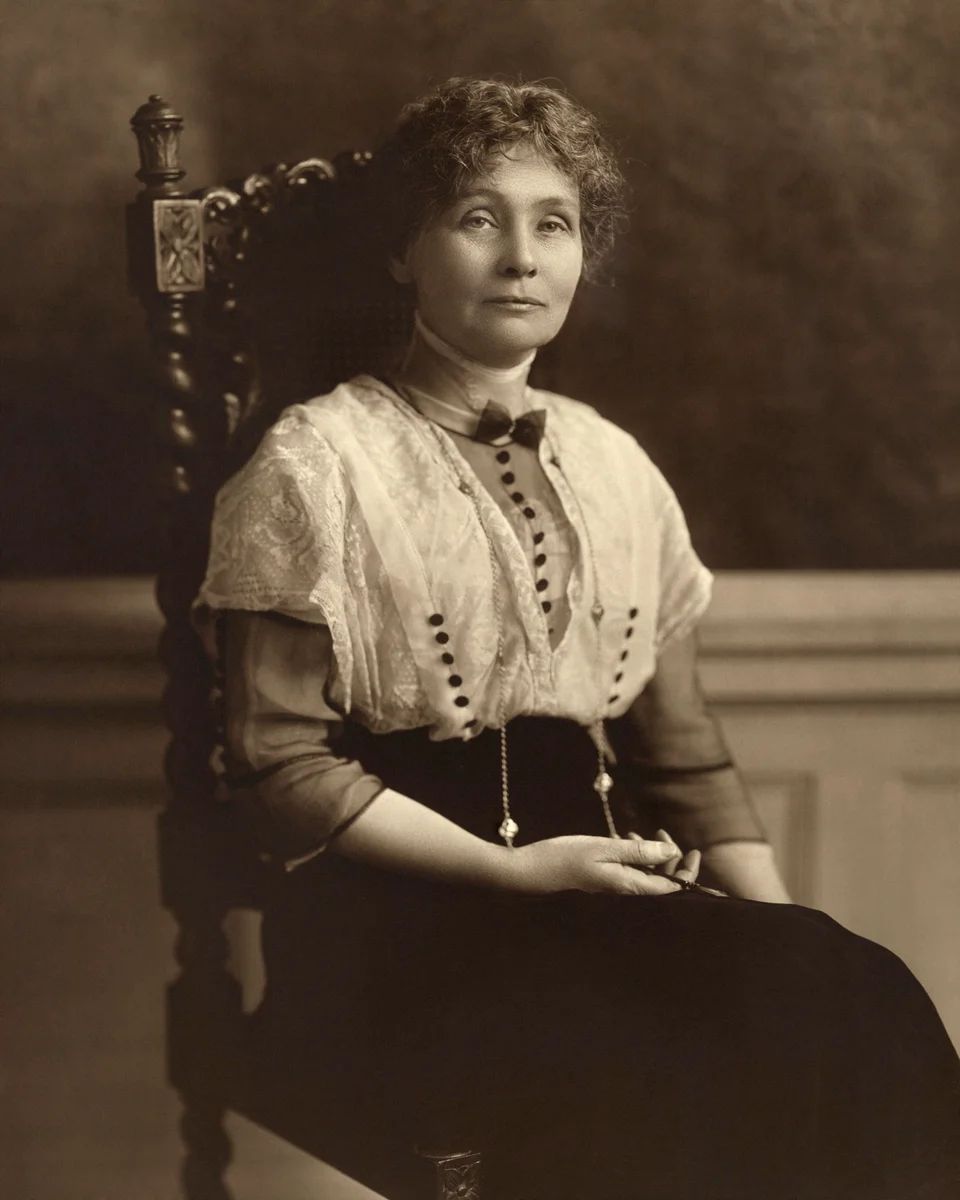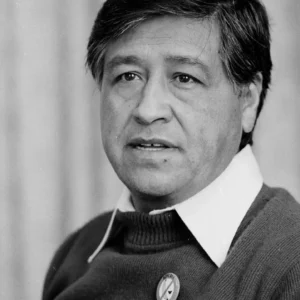Emmeline Pankhurst, born on July 15, 1858, in Manchester, England, was a pivotal figure in the women’s suffrage movement in the United Kingdom. As the leader of the Women’s Social and Political Union (WSPU), she spearheaded a militant campaign for women’s right to vote, significantly altering the course of British history. Her unwavering dedication to gender equality and her relentless activism made her one of the most influential figures of the early 20th century. This article explores the life, contributions, and legacy of Emmeline Pankhurst, the leader of the suffragette movement.
Early Life and Influences
Birth and Family Background
Emmeline Goulden was born into a politically active and progressive family in Manchester. Her parents, Robert and Sophia Goulden, were both advocates for social reform and supporters of the anti-slavery movement. Emmeline was the eldest daughter in a family of ten children, and from a young age, she was exposed to discussions about social justice and political activism.
Education and Early Activism
Despite the prevailing societal norms that limited educational opportunities for women, Emmeline’s parents encouraged her intellectual development. She attended the École Normale Supérieure in Paris, where she received a comprehensive education. Her time in Paris exposed her to feminist ideas and further fueled her passion for women’s rights.
In 1878, Emmeline married Richard Pankhurst, a barrister and staunch advocate for women’s suffrage. Richard’s support and shared vision for gender equality had a profound influence on Emmeline’s activism. Together, they had five children: Christabel, Sylvia, Adela, Harry, and Frank. The Pankhurst household became a hub for political discussions and activities, shaping the future activism of their children.
The Women’s Social and Political Union
Founding of the WSPU
In 1903, frustrated by the slow progress of the existing suffrage organizations, Emmeline Pankhurst founded the Women’s Social and Political Union (WSPU) in Manchester. The WSPU’s motto, “Deeds, not words,” reflected its commitment to direct action and militant tactics. The organization aimed to secure the right to vote for women through any means necessary, including civil disobedience and public demonstrations.
Militant Tactics and Civil Disobedience
Under Emmeline’s leadership, the WSPU adopted increasingly militant tactics to draw attention to their cause. Suffragettes disrupted political meetings, organized mass rallies, and staged hunger strikes when imprisoned. Emmeline herself was arrested multiple times and endured harsh treatment in prison, including force-feeding during hunger strikes. These tactics garnered significant public and media attention, highlighting the urgency of the suffrage movement.
Key Campaigns and Actions
The “Votes for Women” Campaign: The WSPU organized large-scale demonstrations and parades, including the famous “Women’s Sunday” rally in Hyde Park in 1908, which attracted over 300,000 participants.
Window-Smashing Campaign: In 1912, suffragettes targeted government buildings and businesses, breaking windows to protest the lack of progress on women’s suffrage.
Arson and Vandalism: Some members of the WSPU resorted to more extreme measures, such as setting fire to postboxes and vandalizing public property, to demonstrate their frustration and determination.
Challenges and Controversies
Internal Divisions
The WSPU’s militant tactics and autocratic leadership style led to internal divisions within the organization. Emmeline’s daughter, Sylvia Pankhurst, disagreed with the WSPU’s focus on middle-class women and its exclusion of working-class activists. Sylvia eventually left the WSPU to form the East London Federation of Suffragettes, which focused on broader social issues and included working-class women in its ranks.
Public and Government Opposition
The militant actions of the WSPU were met with strong opposition from both the public and the government. Critics accused the suffragettes of undermining the rule of law and resorting to terrorism. The government responded with harsh measures, including arrests, imprisonment, and force-feeding of hunger-striking suffragettes. Despite the backlash, Emmeline and her followers remained resolute in their pursuit of women’s suffrage.
World War I and the Changing Landscape
Shift in Focus
With the outbreak of World War I in 1914, Emmeline Pankhurst made the strategic decision to shift the WSPU’s focus from militant suffrage activities to supporting the war effort. She believed that demonstrating women’s patriotism and contributions to the war would strengthen their case for enfranchisement. The WSPU suspended its campaign of civil disobedience and encouraged women to take on roles traditionally held by men, such as working in factories and serving as nurses.
Contributions to the War Effort
Emmeline and the WSPU played a crucial role in mobilizing women to contribute to the war effort. They organized recruitment drives, established training programs, and advocated for equal pay for women working in wartime industries. The visibility of women’s contributions to the war effort helped to shift public opinion and increased support for women’s suffrage.
Victory for Women’s Suffrage
The Representation of the People Act 1918
The tireless efforts of Emmeline Pankhurst and the suffragettes, combined with the changing political landscape brought about by World War I, culminated in a significant victory for women’s suffrage. In 1918, the British government passed the Representation of the People Act, which granted voting rights to women over the age of 30 who met certain property qualifications. While this was not full suffrage, it was a monumental step forward and a testament to the suffragettes’ relentless advocacy.
Further Advancements
Emmeline Pankhurst continued to campaign for equal voting rights until her death. In 1928, ten years after the initial victory, the Representation of the People (Equal Franchise) Act was passed, granting equal voting rights to women and men over the age of 21. This milestone marked the culmination of decades of struggle and activism led by Emmeline and her fellow suffragettes.
Legacy and Impact
Influence on Women’s Rights Movements
Emmeline Pankhurst’s leadership and activism left an indelible mark on the women’s rights movement. Her commitment to direct action and her willingness to endure personal hardship for the cause of suffrage inspired future generations of feminists and activists. The tactics and strategies employed by the WSPU have influenced numerous social and political movements worldwide.
Honors and Commemoration
Emmeline Pankhurst’s contributions to women’s suffrage have been widely recognized and commemorated. Statues, memorials, and plaques honoring her legacy can be found in various locations, including a statue in London’s Victoria Tower Gardens and a blue plaque at her former residence in Manchester. In 1999, Time magazine named her one of the 100 most important people of the 20th century.
Conclusion
Emmeline Pankhurst’s life and work were characterized by unwavering determination and a fierce commitment to gender equality. As the leader of the suffragette movement, she played a pivotal role in securing voting rights for women and advancing the cause of women’s rights. Her legacy continues to inspire and empower individuals to advocate for social justice and equality. Emmeline Pankhurst’s contributions to the suffrage movement have left an enduring impact on history, reminding us of the power of activism and the importance of fighting for what is right.

